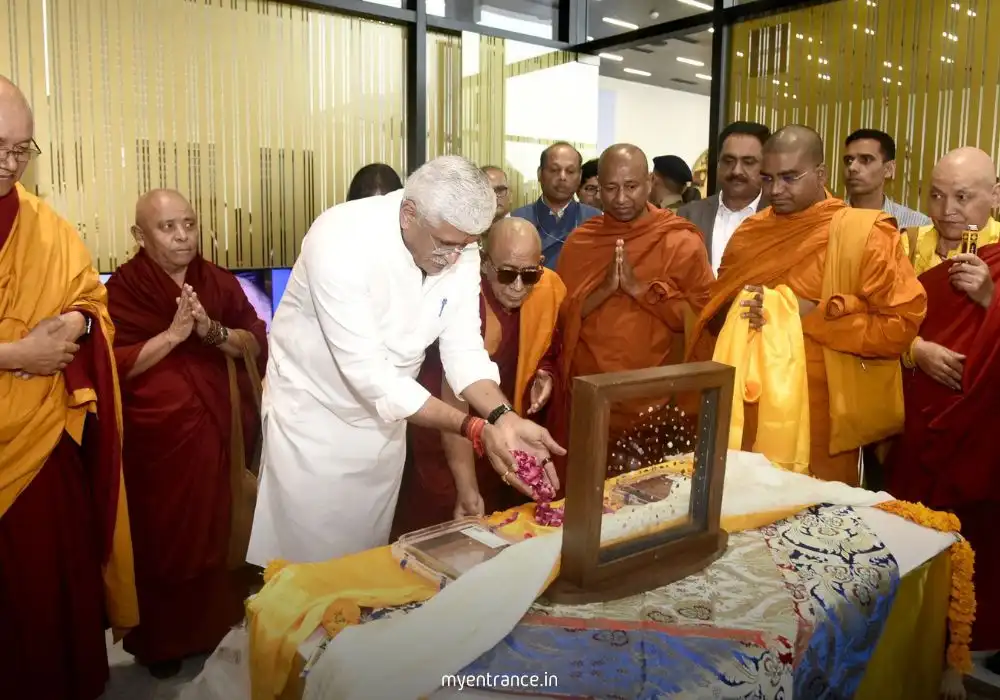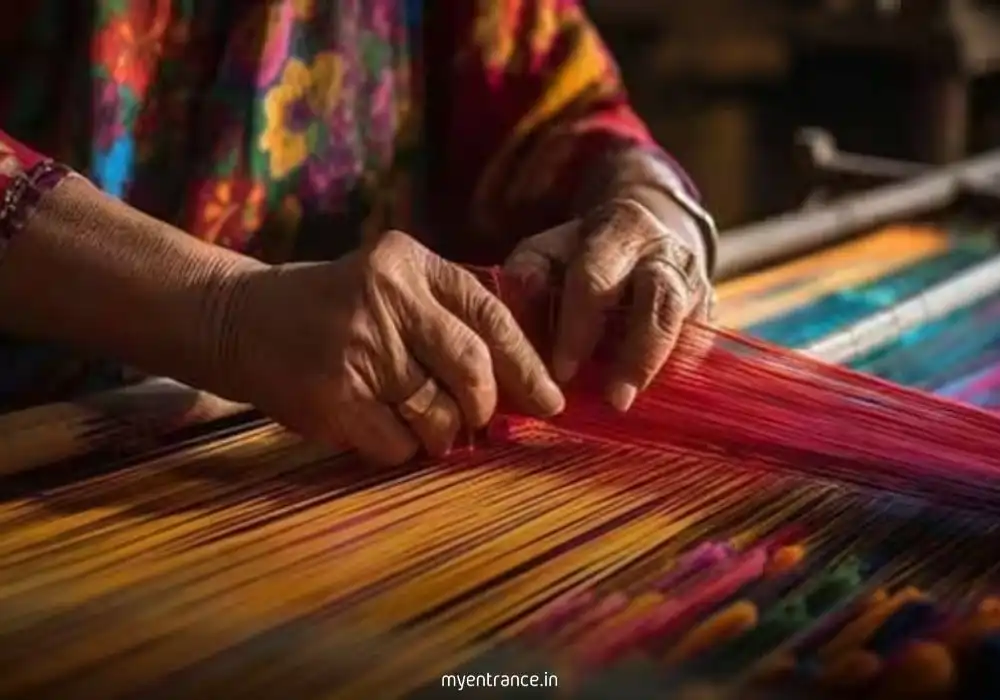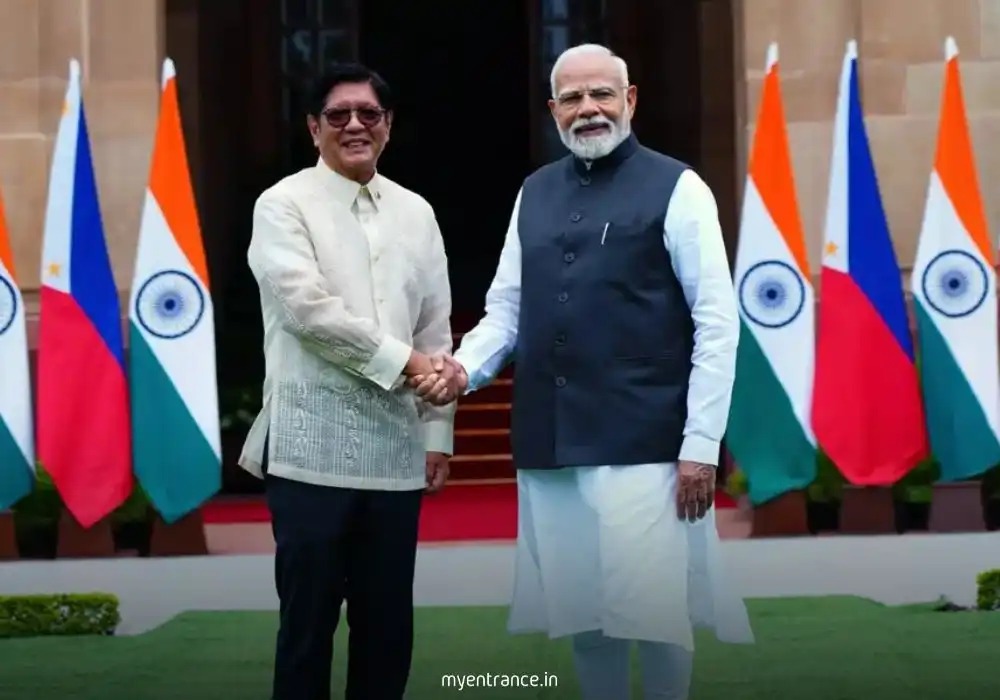Translate Language
The Sacred Homecoming: How India Reclaimed Its Lost Piprahwa Treasures
The Piprahwa gems, sacred Buddhist relics looted during colonial rule, have finally returned to India. This homecoming marks a triumph for cultural diplomacy and heritage preservation. Here’s how an innovative public-private partnership made this decades-long dream a reality.

How Piprahwa Gems Returned to India: A Faculty’s Perspective
Imagine ancient gemstones buried for millennia, unearthed by a British colonial officer in 1898, then scattered across continents. The Piprahwa relics—believed to contain Buddha’s ashes—were excavated from a stupa in Uttar Pradesh by William Peppé. While some artifacts reached Kolkata’s Indian Museum, the gemstones remained with Peppé’s family for 127 years.
In 2024, these treasures resurfaced at a Sotheby’s Hong Kong auction, priced at $100 million. India’s Ministry of Culture sprang into action:
Legal Intervention: Issued notices to Sotheby’s and the Peppé family, demanding an immediate halt to the sale.
Diplomatic Outreach: The Archaeological Survey of India (ASI) urged Hong Kong authorities to block the auction.
The Grey Area Challenge: Since the gems were excavated pre-Independence and held privately, India’s 1972 Antiquities Act couldn’t directly apply.
Here’s where ingenuity triumphed. Industrialist Pirojsha Godrej acquired the 349 gemstones privately, sidestepping ethical concerns about government bidding. He then loaned them to India’s National Museum for 5 years, with a 3-month public exhibition planned. This public-private model became India’s golden key to reclaiming its heritage.
Why This Matters for Exams (UPSC, SSC, PSC, etc.)
This case isn’t just history—it’s a living example of themes crucial for competitive exams:
Cultural Heritage: Illustrates India’s efforts to reclaim stolen artifacts (GS-I: Art & Culture).
Legal Frameworks: Highlights gaps in antiquities laws and evolving repatriation diplomacy (GS-II: Governance).
Public-Private Partnerships: A contemporary model for achieving national goals (GS-III: Economy).
Buddhism’s Legacy: Connects to ancient sites (Stupas, Buddhist Circuit) and religious history (Prelims: Current Events).
Q&A for Exam Preparation
Q1: Why are the Piprahwa relics archaeologically significant?
Ans: They were unearthed from a stupa in Piprahwa (UP), linked to Buddha’s ashes, and date back to 5th century BCE—making them vital evidence of early Buddhism.
Q2: What legal hurdles did India face in repatriating the gems?
Ans: The relics were excavated before India’s 1972 Antiquities Act, privately held for 127 years, and lacked clear ownership papers under international law.
Q3: How did the “public-private partnership” enable the relics’ return?
Ans: Industrialist Pirojsha Godrej purchased the gems privately to avoid ethical issues, then loaned them to the National Museum—bypassing legal complexities.
Q4: Where were the Piprahwa relics stored before their return?
Ans: Most artifacts were split between Thailand (donated to King Rama V) and Kolkata’s Indian Museum; the auctioned gems were with the Peppé family.
Q5: Which key Buddhist site is near Piprahwa?
Ans: Kushinagar (where Buddha attained Mahaparinirvana), part of Uttar Pradesh’s Buddhist Circuit.
Key Takeaways for Quick Revision
1898: British officer William Peppé excavates Piprahwa stupa; relics smuggled out.
2024 Auction: 349 gems surface at Sotheby’s Hong Kong ($100M valuation).
India’s Strategy: Legal pressure + diplomatic outreach + Godrej’s private acquisition.
Outcome: Relics loaned to National Museum for 5 years; public display planned.
Exam Link: Covers “Art & Culture” (GS-I), “Heritage Management” (Mains), and “Current Events” (Prelims).
Get 3 Months Free Access for SSC, PSC, NIFT & NID
Boost your exam prep!
Use offer code WELCOME28 to get 3 months free subscription. Start preparing today!















